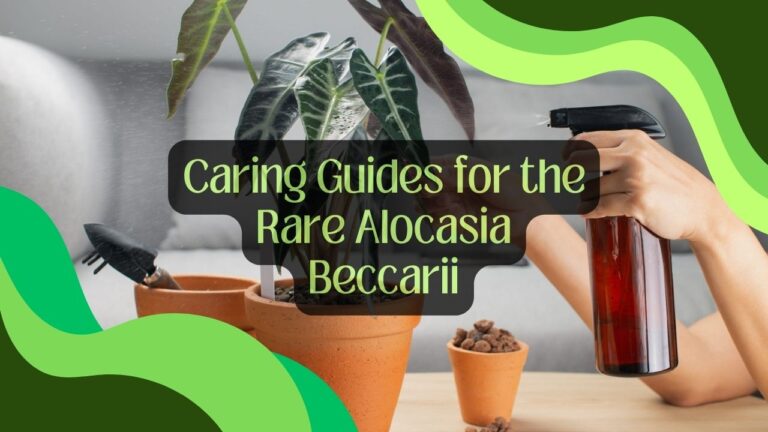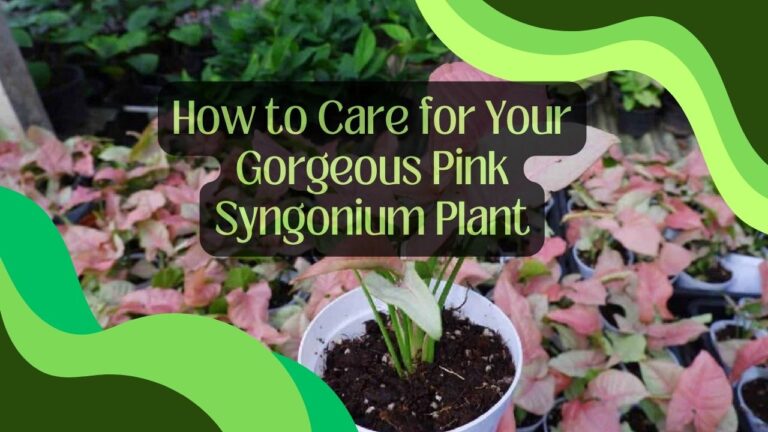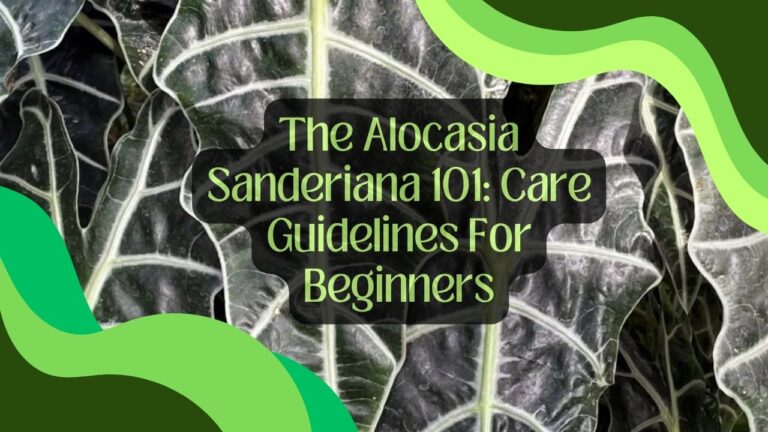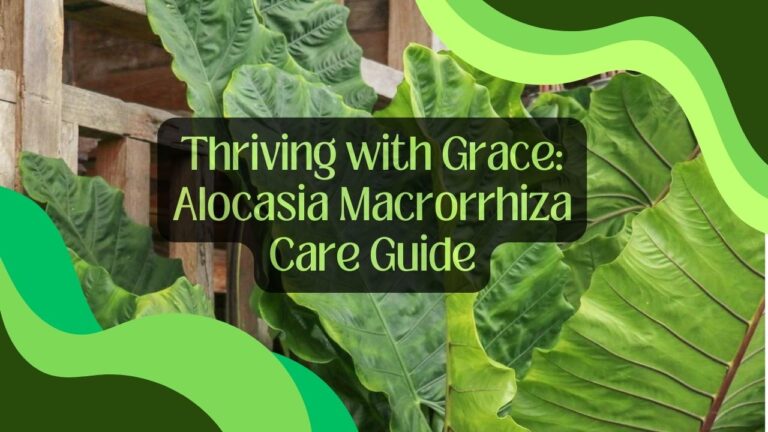A Comparative Look At Taro Vs Elephant Ear Debate
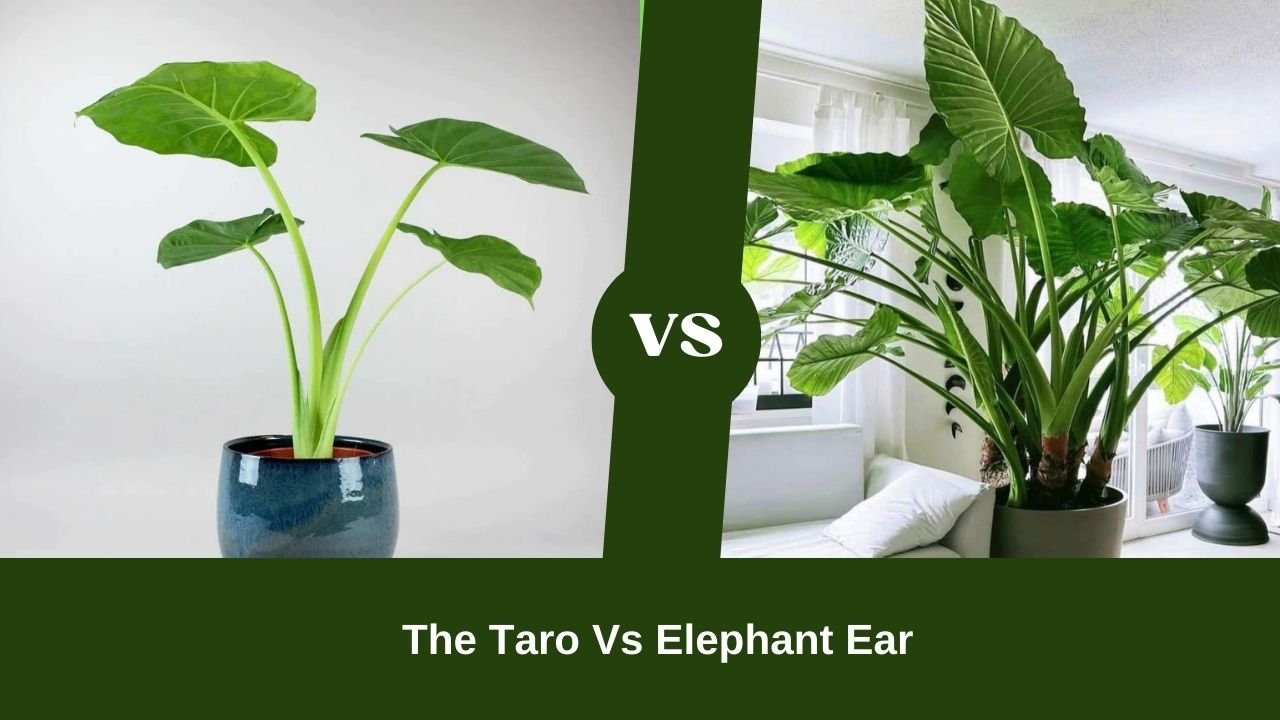
Taro and Elephant Ears, both belong to the same botanical family. But interestingly, they serve a variety of purposes and they’re different in this consideration from each other.
What are the primary differences between Taro and Elephant Ears? Taro is grown primarily for its edible corms, making it a staple food in various cuisines. In contrast, the Elephant Ear is treasured for its magnificent and decorative large leaves, adding a tropical flair to gardens and indoor spaces.
Besides having tons of similarities, they’ve not shared the same grounds for a lot of other things as well. I’ll try to emphasize both the similarities and differences of these plants precisely. Make sure you don’t skip any sections.

Table of Contents
The Taro Vs Elephant Ear in A Nutshell
Let’s take a look at the table quickly. So that you’ll have an idea how different they’re from each other, within a very short time.
| Aspect | Taro | Elephant Ear |
| Common Uses | Edible corms used for food | Ornamental plant prized for large foliage |
| Leaf Shape and Size | Heart-shaped, various sizes | Varied leaf shapes, large and decorative |
| Growing Conditions | Thrives in wet, swampy areas | Prefers well-draining soil and humidity |
| Sunlight Requirements | Full to partial sun exposure | Partial to full shade for most species |
| Frost Tolerance | Sensitive to frost | Sensitive to cold temperatures |
| Watering Needs | Requires consistent moisture | Regular watering, avoid waterlogging |
| Culinary Uses | Cooked, baked, or steamed | Not consumed; ornamental use only |
| Popular Varieties | ‘Black Magic,’ ‘Maui Purple’ | ‘Alocasia Polly,’ ‘Colocasia Illustris’ |
| Growth Habit | Herbaceous perennial | Herbaceous perennial |
| Origin | Southeast Asia | Southeast Asia, tropical regions worldwide |
Taro Vs Elephant Ear: Differences And Similarities
Besides the differences between these two plants, there are some similarities between these two. To know everything about them, you must read the whole discussion.
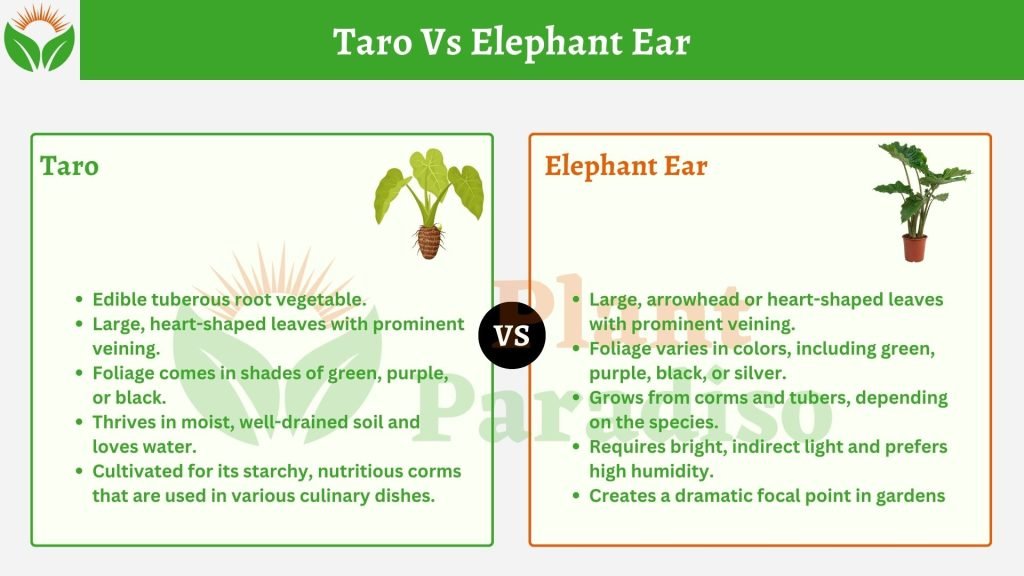
6 Differences Between Taro And Elephant Ear
I’ve already said ya. Let’s take a look at the differences between the plants.
Purpose of Growth
Taro (Colocasia esculenta) is grown primarily for its edible corms, serving as a food source. In contrast, Elephant Ear (Alocasia and Colocasia spp.) is treasured as an ornamental plant for its large decorative foliage.
Elephant Ear Shows Diverse Leaf Shape and Size
Taro leaves are usually heart-shaped and come in various sizes. Elephant Ear exhibits diverse leaf shapes, often large and resembling an elephant’s ear.
Growing Conditions May vary
Taro thrives in wet, swampy areas and requires consistent moisture. Elephant Ear prefers well-draining soil and higher humidity levels, though specific species may have varying needs.
Sunlight Requirements
Taro can tolerate full to partial sun exposure, whereas most Elephant Ear varieties prefer partial to full shade, making them ideal for shaded areas in the garden.
Frost Tolerance
Taro is sensitive to frost and cannot withstand cold temperatures, while Elephant Ear is also sensitive to freezing conditions.
Culinary Uses
Taro corms are cooked, baked, or steamed and are an edible delicacy, while Elephant Ear is not consumed and is used solely for ornamental purposes.
3 Reasons Why Both of the Plants are Easy to Take Care of
Taro and Elephant Ear plants are pretty easy to care for indoors for a few reasons.
- First, they’re from the same plant family and originate in tropical Southeast Asia. So they thrive in warm, humid environments with bright light – just like inside our homes.
- They also return every year, so no need to replant. With basic care like watering and fertilizing, they flourish.
- We can grow them as potted plants to bring huge, heart-shaped tropical foliage indoors. There are many varieties with different leaf colors and patterns to choose from too.
Overall, Taro and Elephant Ear are low-maintenance, versatile plants perfect for beginners looking to add bold, lush greenery to their indoor garden. Caring for them is hassle-free!
Let’s Try to Find a Suitable Match
The choice between Taro and Elephant Ear depends on your specific preferences, gardening goals, and available resources. Here are some factors to consider when deciding which one is good for you:
Choose Taro If
- You enjoy growing your own food and experimenting with culinary delights, Taro’s edible corms can be a great addition to your garden. Harvesting and cooking your own Taro can be a rewarding experience.
- Taro can be a suitable choice, as it can tolerate a range of light conditions . So, if your garden receives full to partial sun, don’t worry.
- Taro will appreciate the wet conditions and thrive.
- Taro has cultural significance in many regions and is an essential ingredient in traditional dishes. So, might be a valuable addition for those interested in cultural connections through gardening.
Choose Elephant Ear If
- If you’re primarily looking to enhance your garden’s aesthetics with striking and decorative foliage, Elephant Ear is an excellent choice. Its large leaves add a touch of tropical paradise to any landscape.
- If your garden has shaded spots or partial shade, Elephant Ear varieties will thrive. making them ideal for adding greenery to areas with limited sunlight.
- Certain Elephant Ear species, like Alocasia, can be grown as attractive houseplants. These will enhance aestheticity.
- Elephant Ears can serve as eye-catching focal points or as accent plants, creating a sense of drama and uniqueness in your garden design.
If you ask me the which one to pick, I can’t be specific. But I’ve an easy answer for you. If you love aesthetics more than any other purpose, the Elepahant Ear will be good. Other than that, going with the taro is a Win!
Finishing Note
The comparison between Taro and Elephant Ear offers valuable insights into their distinct characteristics, catering to diverse gardening preferences. Both plants share low-maintenance traits, adding exotic charm to any garden.
The ultimate decision depends on aligning their features with gardening objectives, environmental conditions, and personal connections. Embrace the joy of cultivating either or both, knowing they promise to enchant and beautify your green space with natural wonder.



